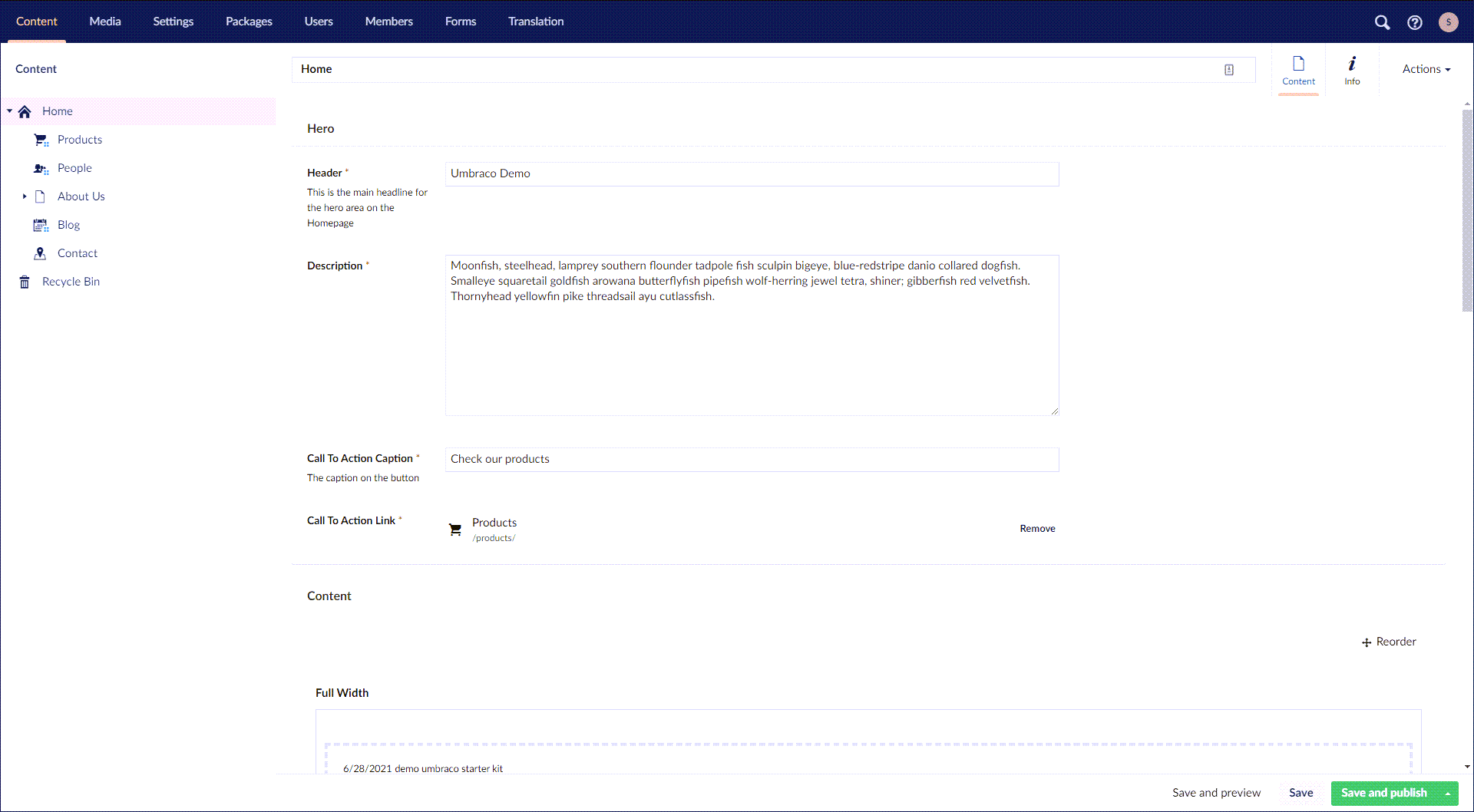 Versie 13 van Umbraco is uitgekomen, een versie met extra lange ondersteuning. Umbraco CMS is een contentmanagementsysteem voor het bewerken en beheren van dynamische webpagina's. Het geheel is geschreven in C# en draait op een Microsoft-infrastructuur. Er zit een positieve en proactieve community achter met ruim 50.000 geregistreerde gebruikers en ontwikkelaars, en die zorgen voor een stabiele stroom aan releases. De complete releasenotes zijn op deze pagina in te zien; dit zijn de belangrijkste verbeteringen:
Versie 13 van Umbraco is uitgekomen, een versie met extra lange ondersteuning. Umbraco CMS is een contentmanagementsysteem voor het bewerken en beheren van dynamische webpagina's. Het geheel is geschreven in C# en draait op een Microsoft-infrastructuur. Er zit een positieve en proactieve community achter met ruim 50.000 geregistreerde gebruikers en ontwikkelaars, en die zorgen voor een stabiele stroom aan releases. De complete releasenotes zijn op deze pagina in te zien; dit zijn de belangrijkste verbeteringen:
A Long-Term Supported VersionUmbraco 13, as an LTS version, ensures stability and ongoing support. Aligning with Microsoft's latest LTS version, .NET 8, and C# 12, it guarantees a secure and forward-compatible platform for your projects until Q4 2026. This is part of our release cadence for the Umbraco CMS, ensuring predictability in releases as well as making it easier for you to plan your upgrades. You can read more about Long-term Support and End-of-Life policies in the Product Knowledge Center.
.NET 8 and C# 12: Harnessing the power of the latest technologiesLeverage the full potential of .NET 8 and C# 12 with Umbraco 13. This upgrade to .NET 8 includes improvements on the garbage collector to adjust the memory limit on the fly which will open up better and more flexible scaling which again can be turned into better performance and more sustainable hosting. There are also improvements to Serialization, JSON, and a whole lot more - including, of course, all the C# 12 features like Primary Constructors, Collection expressions, Alias any type, and Lambda Improvements. This is an upgrade that’ll give you enhanced performance, scalability, and a suite of new features, providing a robust foundation for your development needs. Being on the latest technology also has sustainable advantages - and we like that! Our internal tests on the clean starter kit show a small improvement of 1-3% more requests/second compared to running Umbraco 12 on the same setup. Upgrading to the latest version is often a step in the right direction sustainability-wise - but remember that upgrading isn’t always enough. Being carbon-aware and sustainably (re)designing and developing web projects is important - check out the Umbraco “Sustainability Best Practices” to get a head start on this.
Dynamic RootThe introduction of Dynamic Root for the Multinode Treepicker is an easier and more powerful way to set up dynamic roots compared to the old Xpath syntax. Furthermore, this feature is an enabler for future features, that require the backoffice to not use the published content cache.
Introducing Blocks in the Rich Text EditorAs an alternative to Macros, you now have the option to use Blocks - known from Block List and Block Grid - in the Rich Text Editor, allowing for a more structured and dynamic content creation experience. And as we plan for more block functionality in Umbraco in general - including global blocks as reusable content as described in this RFC - this is a natural step that aligns with how you work with Umbraco.
More power to the editors with no-code/low-code WebhooksWebhooks is a new headless, no-code/low-code feature in Umbraco 13, allowing editors to do seamless integration with third-party systems. We’ve added UI so that you can type in the URL you want to call (including potential custom headers) and choose one or more events on which you want the URL to be called. Under the hood, we’ll take care of executing, queuing, retrying, and logging. And you can easily extend the functionality by implementing your own webhooks. This feature lets you move certain tasks away from your developers and gives your editors more power and control.
Nested field limiting and nested field expansionInspired by the Umbraco Commerce Storefront API, with Umbraco 13, you get nested field limiting and nested field expansion for the Content Delivery API. This is an upgrade to the headless Content Delivery API, where you’ll find new functionality, like the option to limit and expand properties on multiple levels.


:strip_exif()/i/2004450938.png?f=thumbmedium)